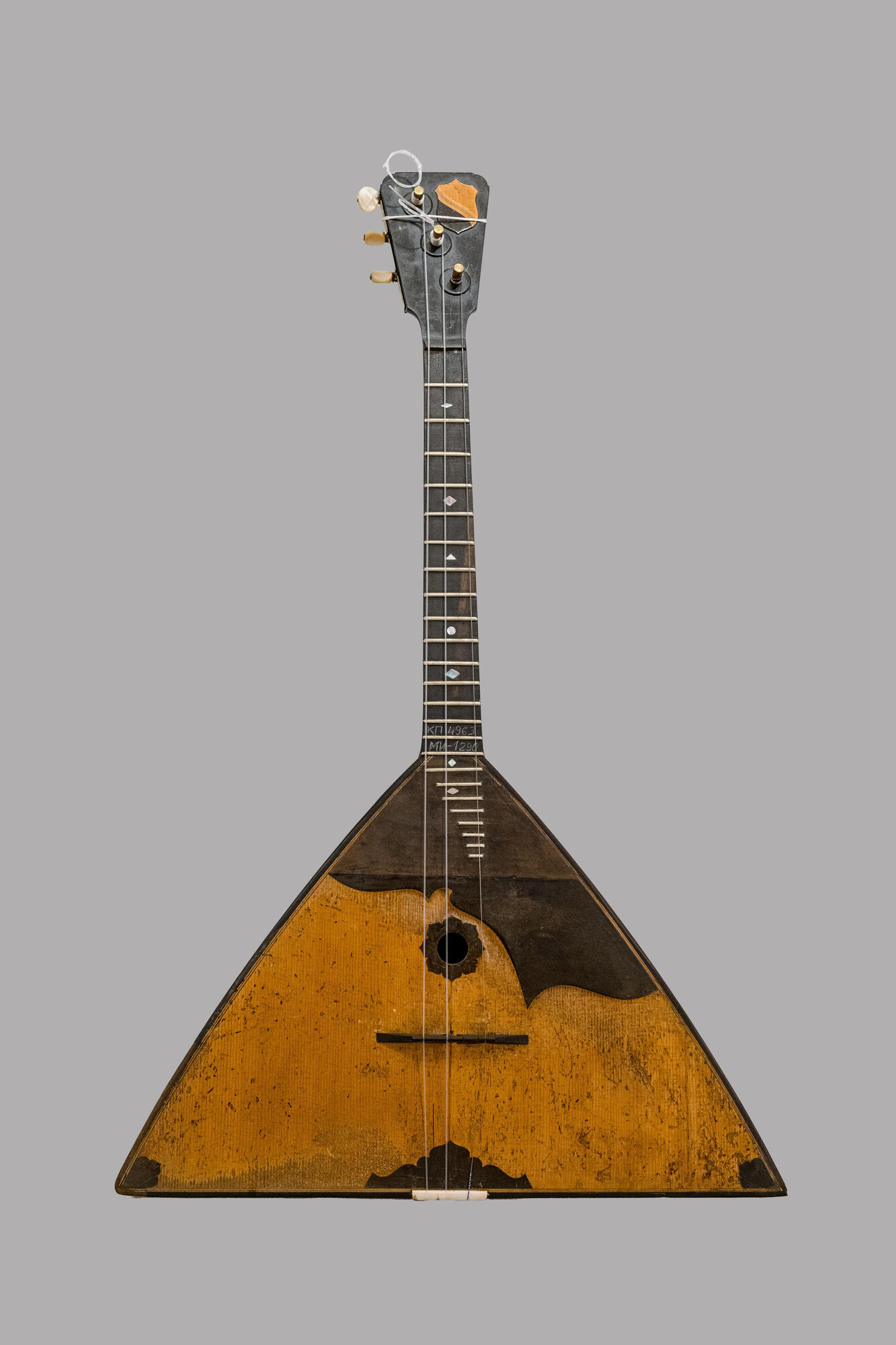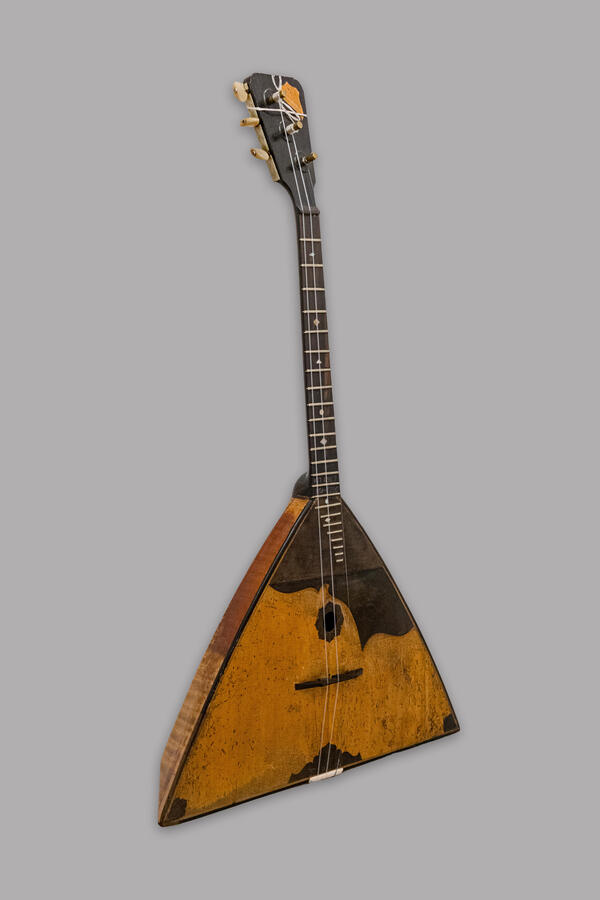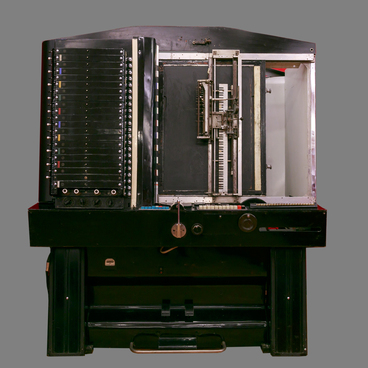The balalaika was first mentioned in the late 17th — early 18th century. This plucked string instrument was extremely popular among rural and urban residents, which is reflected in the numerous balalaika references in folk songs, proverbs, and sayings, and its depiction in lubok paintings.
Vasily Andreyev, a Russian virtuoso musician and the founder of the Great Russian Orchestra, brought the balalaika to the concert stage. In the late 19th century, he initiated and contributed to the development of the new balalaika design.
The instruments made by the talented Komi-Zyryan master Semyon Nalimov were particularly popular with musicians. Nalimov was even nicknamed “the Russian Stradivarius of Balalaika” by the music critic and musicologist Alexander Ossovsky.
The balalaika craftsman began his career as a cabinet maker. Having seen Nalimov’s instruments with their fine workmanship, elegance, and unique style, Vasily Andreyev invited Nalimov to join his experimental workshop where he manufactured musical instruments.
A member of the Great Russian Orchestra Nikolay Stieber wrote that the first prima balalaika manufactured by Semyon Nalimov based on Andreyev’s drawings was superior to all instruments ever made by Saint Petersburg craftsmen and was characterized by the beauty of form, the fullness of sound, and melodious tone. Between 1895 and 1916, Nalimov made around 300 instruments.
Nalimov’s balalaikas were distinguished with medals at the 1900 Paris Exposition and the First Russian Exposition of Musical Instruments in Saint Petersburg in 1906–1907. In 1911, upon the recommendation of Andreyev, Nalimov was recognized as a hereditary citizen of honor.
The museum’s collection houses a balalaika that the craftsman made specifically for Vasily Andreyev. Its pegbox features Nalimov’s emblem in the shape of a black and yellow coat of arms with a diagonal white stripe.
Later, Andreyev gave this instrument to his student, the notable balalaika player Boris Troyanovsky. His performance of Russian folk songs on this balalaika made a lasting impression on Leo Tolstoy. In 1909, he invited the famous musician to his house at Yasnaya Polyana. Delighted by the musician’s playing, Tolstoy presented him with a photograph with the following inscription, “To Boris Sergeyevich Troyanovsky as a token of gratitude for the great pleasure that I recently experienced while listening to his masterful and authentic performance.”
Vasily Andreyev, a Russian virtuoso musician and the founder of the Great Russian Orchestra, brought the balalaika to the concert stage. In the late 19th century, he initiated and contributed to the development of the new balalaika design.
The instruments made by the talented Komi-Zyryan master Semyon Nalimov were particularly popular with musicians. Nalimov was even nicknamed “the Russian Stradivarius of Balalaika” by the music critic and musicologist Alexander Ossovsky.
The balalaika craftsman began his career as a cabinet maker. Having seen Nalimov’s instruments with their fine workmanship, elegance, and unique style, Vasily Andreyev invited Nalimov to join his experimental workshop where he manufactured musical instruments.
A member of the Great Russian Orchestra Nikolay Stieber wrote that the first prima balalaika manufactured by Semyon Nalimov based on Andreyev’s drawings was superior to all instruments ever made by Saint Petersburg craftsmen and was characterized by the beauty of form, the fullness of sound, and melodious tone. Between 1895 and 1916, Nalimov made around 300 instruments.
Nalimov’s balalaikas were distinguished with medals at the 1900 Paris Exposition and the First Russian Exposition of Musical Instruments in Saint Petersburg in 1906–1907. In 1911, upon the recommendation of Andreyev, Nalimov was recognized as a hereditary citizen of honor.
The museum’s collection houses a balalaika that the craftsman made specifically for Vasily Andreyev. Its pegbox features Nalimov’s emblem in the shape of a black and yellow coat of arms with a diagonal white stripe.
Later, Andreyev gave this instrument to his student, the notable balalaika player Boris Troyanovsky. His performance of Russian folk songs on this balalaika made a lasting impression on Leo Tolstoy. In 1909, he invited the famous musician to his house at Yasnaya Polyana. Delighted by the musician’s playing, Tolstoy presented him with a photograph with the following inscription, “To Boris Sergeyevich Troyanovsky as a token of gratitude for the great pleasure that I recently experienced while listening to his masterful and authentic performance.”







